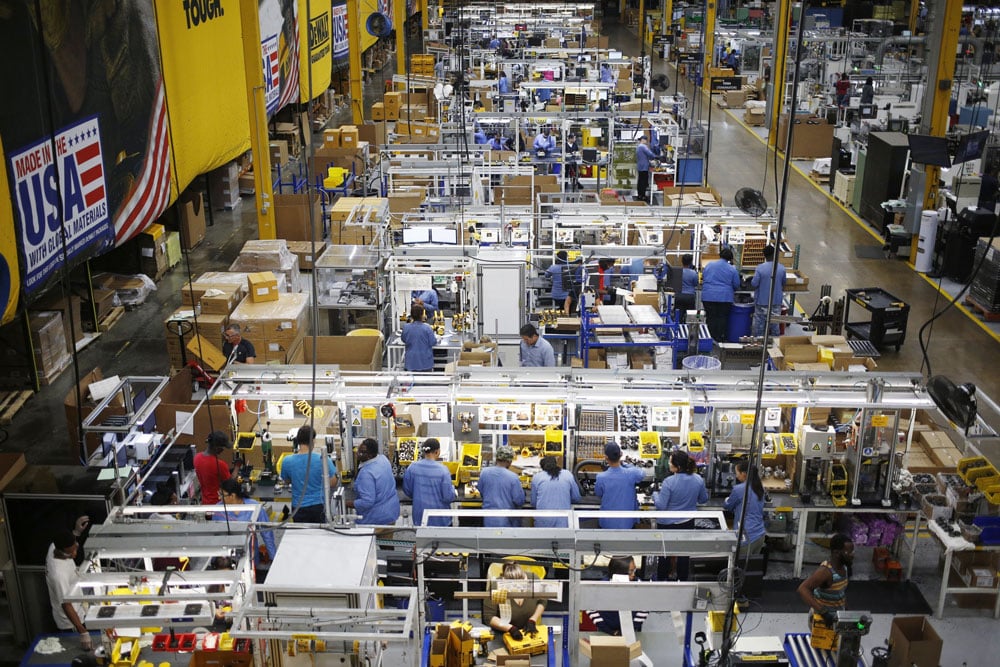If a machine breaks down, manufacturers act fast. But when your workforce breaks down? Too often, the response is to hire more people and hope for the best. That’s a costly mistake.
In this episode of Shift Talk, workforce consultant Nicola Worthy breaks down what’s really driving high turnover in manufacturing and what you can do to fix it. From hidden labor costs to the myth of flexibility, Nicola shares actionable workforce development strategies that work on the factory floor.
Stop the Blame Game—Start With Shared Metrics
Nicola explains why treating people data and operations data separately keeps manufacturers in a constant cycle of blame. Think of it like the Spider-Man meme: HR blames Ops, Ops blames HR, and the problem never gets solved. Her solution? One shared dashboard. One collective bonus structure. One aligned leadership team. That’s how you start solving turnover—together.
Nicola has worked across facilities in the U.K. and U.S., and the patterns are consistent:
- Disconnected metrics between HR and Ops
- Supervisor-specific churn with no accountability
- Constant blame cycles with no resolution
- Lack of schedule autonomy and employee input
“You wouldn’t ignore a broken product line so stop ignoring a broken workforce.”
Manufacturing teams fix product issues with data and root cause analysis. Nicola argues we need to apply that same discipline to our people problems.
Create a Shared Dashboard Between HR and Operations
Most factories track people metrics and performance metrics separately. Nicola argues that this siloed approach is exactly why manufacturers struggle to reduce turnover.
Her recommendations for workforce alignment:
- Implement a shared dashboard that includes:
- Turnover and retention rates
- Productivity and downtime trends
- Quality metrics and customer complaints
- Tie bonuses and performance reviews to collective outcomes not just departmental KPIs
- Require cross-functional ownership of workforce data, reviewed weekly or monthly
When every leader is responsible for the full picture, you start solving root problems instead of chasing symptoms.
Calculate the True Cost of Turnover
According to Nicola, most manufacturers don’t actually know what turnover costs them because they’re “making it up.” Her advice: every facility should have its own cost-of-turnover model that reflects its unique roles, production lines, and team structures. Without that clarity, leadership is flying blind.
To create a reliable cost-of-turnover model, include:
- Recruitment marketing, job ads, and recruiter hours
- Onboarding time, materials, and training support
- Productivity drag during the ramp-up period
- Supervisor time managing backfill and schedule changes
- Impact on quality, scrap, or missed orders due to churn
With a customized cost model, companies can prioritize investment in the areas with the highest ROI whether that’s leadership development, training, or scheduling autonomy.
Autonomy, Not Flexibility, Is the Retention Differentiator
Flexibility is one of the most overused (and misunderstood) words in workforce management. What workers actually want especially younger employees and working parents, is autonomy.
Nicola’s own perspective changed when she saw how her husband’s aviation job allowed him to self-schedule shifts around their family’s needs.
What true autonomy looks like in manufacturing:
- Ability to choose or swap shifts with minimal friction
- Predictable, stable schedules so workers can plan their lives
- Clear systems for requesting changes or picking up extra hours
- Tools that respect workers’ time instead of punishing life events
“Workers stay when they can run their life without quitting their job to do it.”
Workforce Development Strategies You Can Apply Tomorrow
Nicola’s no-fluff checklist for HR and Ops teams:
- Learn your company’s business goals and tie labor strategy to them
- Identify your actual cost-of-turnover per role and facility
- Create a shared dashboard that includes both people and ops data
- Align incentives and bonuses to shared KPIs, not just silos
- Give workers more autonomy over their time, not just “flexibility.”
Start with one line, one team, or one shift. Prove it out. Then scale.
“If your workforce strategy doesn’t reduce cost, risk, or improve profitability you’re missing the point.”
Retention isn’t just about recruiting better.
It’s about leading better, aligning better, and understanding that your people are part of your production strategy, not separate from it. As Nicola says, “We’re either reducing risk, reducing cost, or increasing profitability. If we can’t tie our people strategy to one of those, we’re missing the point.”
Connect with Nicola Worthy
About the Shift Talk Podcast
Shift Talk, is a podcast by MyWorkChoice where we talk about the real shift happening and hard conversations because we know the stakes are high in manufacturing and distribution. Your workforce is your most valuable asset, and without retention, you’re stuck in a cycle of hiring and losing people. It doesn’t have to be that way.





